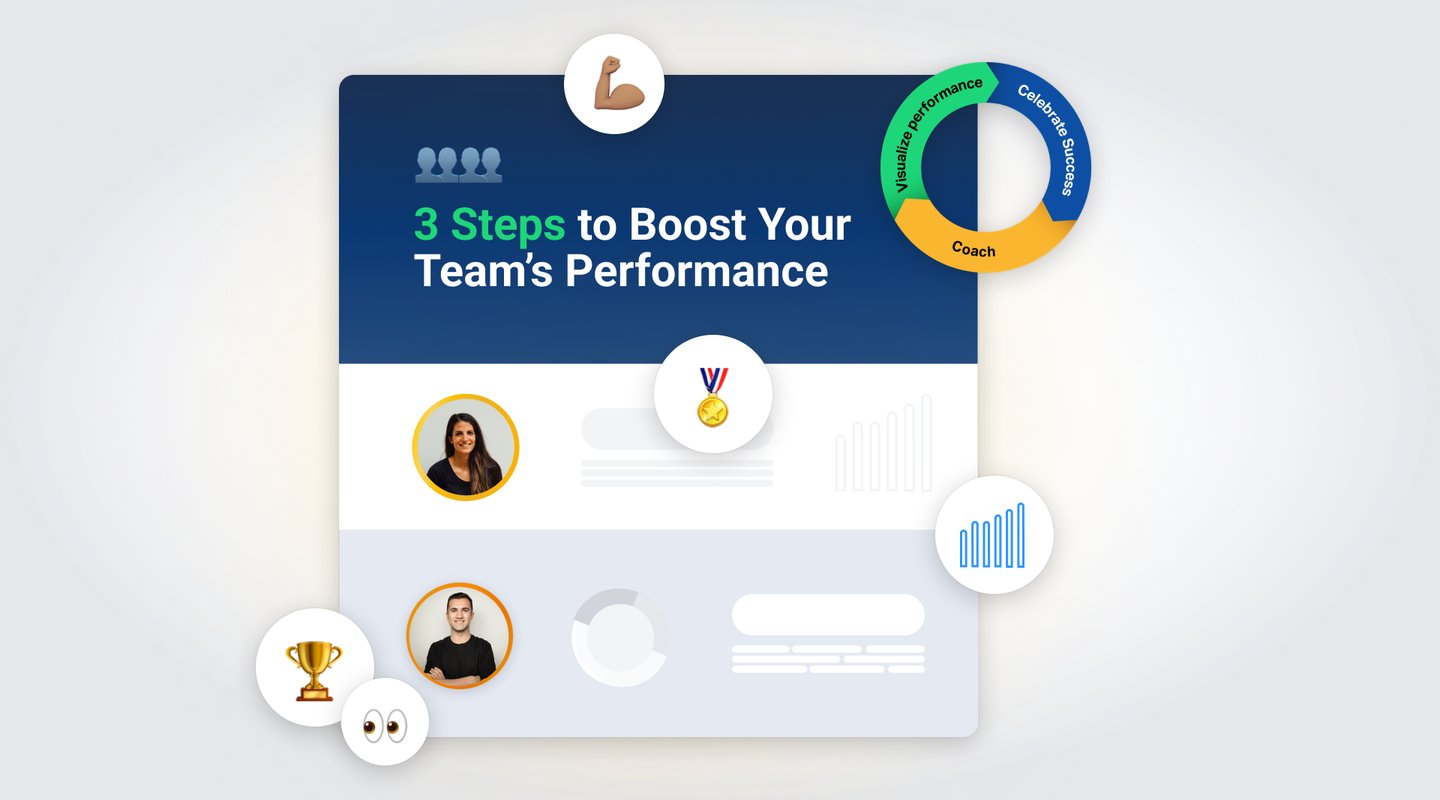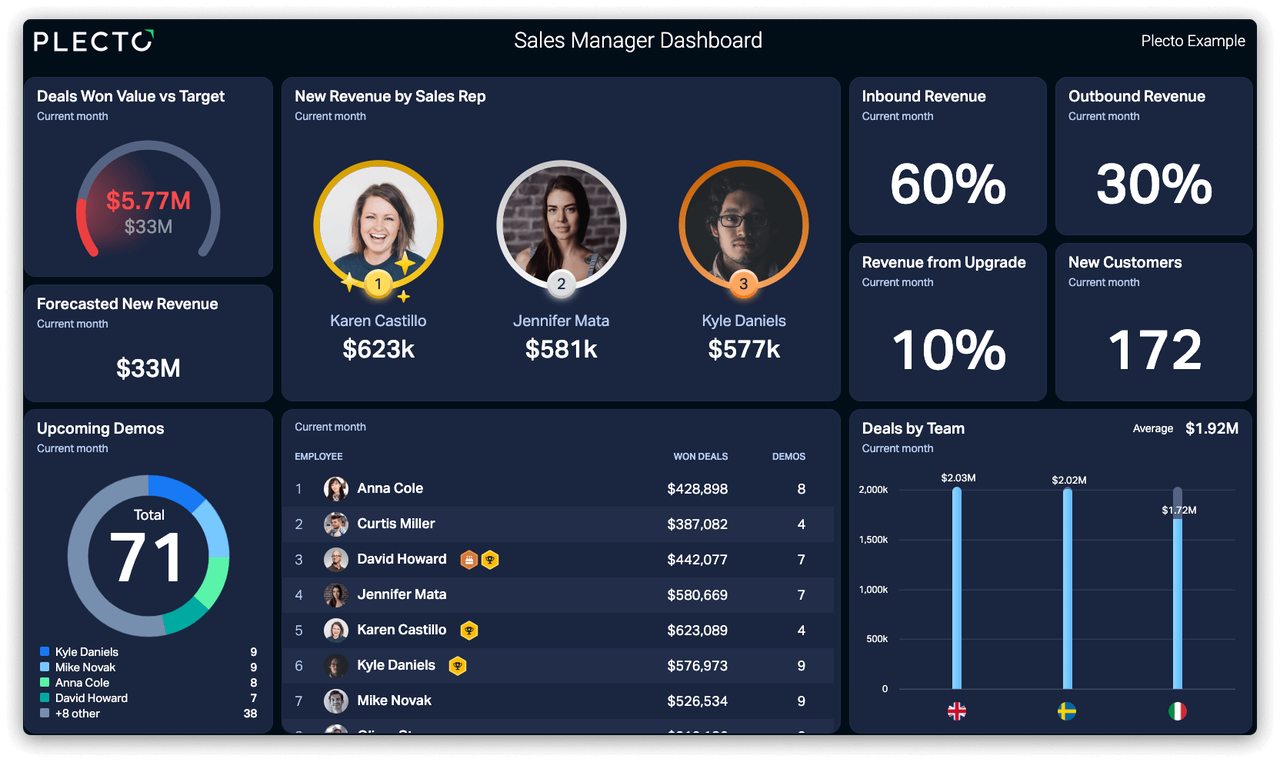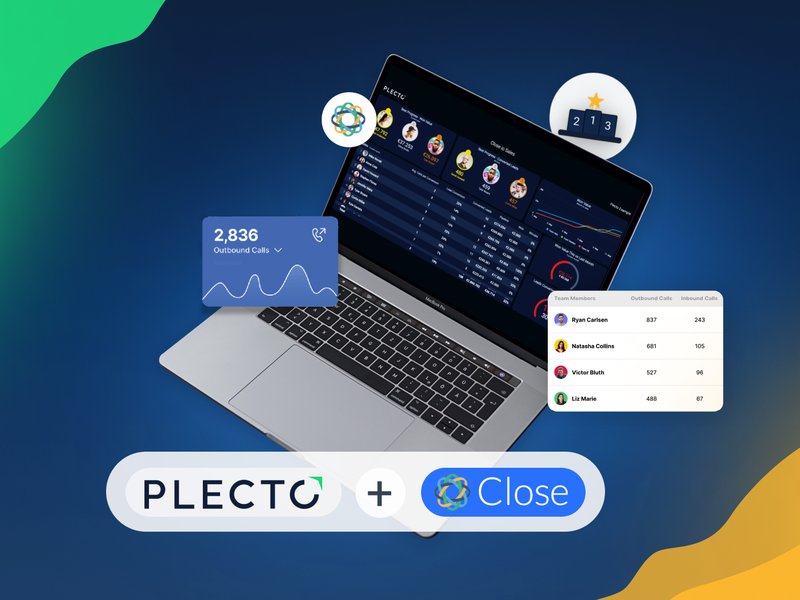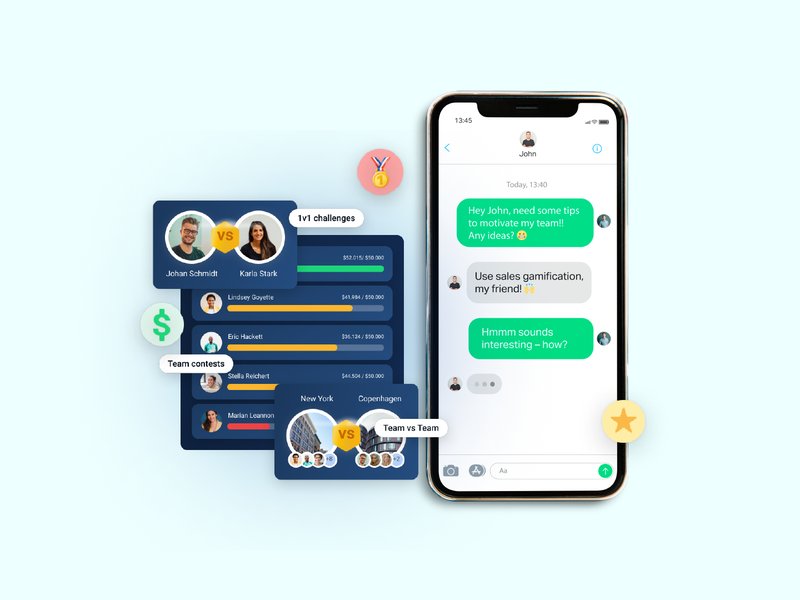If you’re a modern sales leader looking for an effective technique for building a performance-driven culture in your sales organization, you’ve come to the right place!
In this article, we’ll share our 3-step model for building a performance-driven sales culture in your team. The VCC Model is already being used in some of the world’s most successful sales organizations. Read on to find out what it is, how you can implement it, and how other sales leaders are already using it with great success.
What is the VCC Model and why is it important?
As a sales leader, it’s crucial to have a comprehensive understanding of your team’s performance – and it’s even more imperative to have an overarching operational framework for efficient sales performance management. The 3 steps of the VCC Model can help with all of that by pinpointing what you can do to help your team improve productivity, and empowering your sales reps to focus on what they do best – delivering results that will ‘wow’ your CEO!
Read on to learn how to apply this 3-step sales performance management model, including:
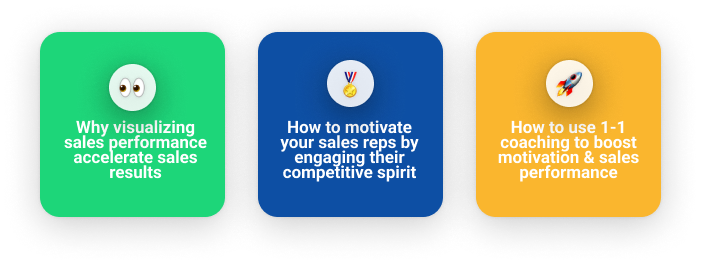
Step 1: Visualize Performance
Visualizing sales performance motivates sales reps by tracking progress toward their sales KPIs and making the resulting data visible. In the process, you’ll get a solid overview of how individual reps and the organization as a whole are performing. For example, you can monitor your team’s sales funnel, close rate, and real-time sales performance against quarterly revenue goals. These metrics give you instant insight into overall performance – helping to inform goal-focused actions, like shifting focus to generate more deals or figuring out why some deals stall in the negotiation phase.
Check out this article for examples of 21 sales KPIs you should be tracking for effective sales performance management.
"It allows them to see the impact of their individual performance and how that affects and drives the company forward. That's where the data is the most powerful. When you enable and empower individuals, they'll work smarter and harder."
Tommy Jester
Director of Sales (North America) at Aircall
5 Benefits of Visualizing Sales KPIs
Sales KPIs help sales leaders and the sales reps themselves ascertain how well they and their teams are performing. But to do this, everyone in your organization must have access to the right data, preferably in a visual format – like charts and graphs. With the right data, in an easy-to-understand format, your team will be able to optimize their pipeline, track progress against targets, and focus their attention where it matters most.
Visualizing KPIs can help you improve sales performance management by:
- Aligning: Ensuring that everyone is working toward the same goals (e.g., quarterly revenue targets)
- Identifying blockers: Identifying impediments to help you understand why your team isn’t reaching their goals (e.g., number of outbound calls)
- Improving data accuracy: Making everyone’s progress visible will incentivize sales reps to properly record their CRM data
- Tracking performance: Enabling you to monitor productivity by tracking metrics like persistency, velocity, and conversion rates
- Promoting a performance culture: Things like leaderboards will let everyone see who’s outperforming their targets, igniting your team’s competitive spirit
How and why does visualizing sales KPIs work?
Data visualization translates hard data into a visual format that makes complex information easier to understand. Visual information is much easier to interpret than text-based information, providing greater clarity and transparency. This enables sales reps and sales teams to know exactly where they stand, so they can act quickly and effectively. Seeing real-time sales KPIs data in a visual format motivates sales reps to take action to keep their numbers up.
Johan Hilding, CEO and Co-Founder of Förebygg, understands the added benefit of dashboards is the accessibility to performance data since "it's easier for us to visualize the goals we've set together within the team."
"The dashboard also increases the hype in the office because for every sale we do, we see that the scoreboard is getting greener and greener – and when the last sale comes close to the budget, the whole office explodes!""
Johan Hilding
CEO and Co-Founder of Förebygg
Build your first dashboard.
Start your 14-day free trial today
A by-product of this is that reps are more likely to enter their data into the CRM – instead of keeping track of it in their heads. When data doesn’t make it into the CRM, sales leaders lack a clear overview of sales performance and sales reps are often too optimistic, too pessimistic, or completely clueless about where they stand. In addition to giving you the data necessary for effective sales performance management, providing your sales team with real-time access to these metrics will ignite their competitive nature.
Daniel Jimenez Dam, Customer Service Operations Manager at Aller Media A/S has noticed a positive difference since his organization started visualizing sales KPIs using Plecto’s real-time sales performance dashboards as part of their sales performance management initiatives. He notes, “Our employees are now curious about the daily performance, and they show high interest in performing. This is probably due to the fact that Plecto has a simple and easy way of showing the KPIs.”
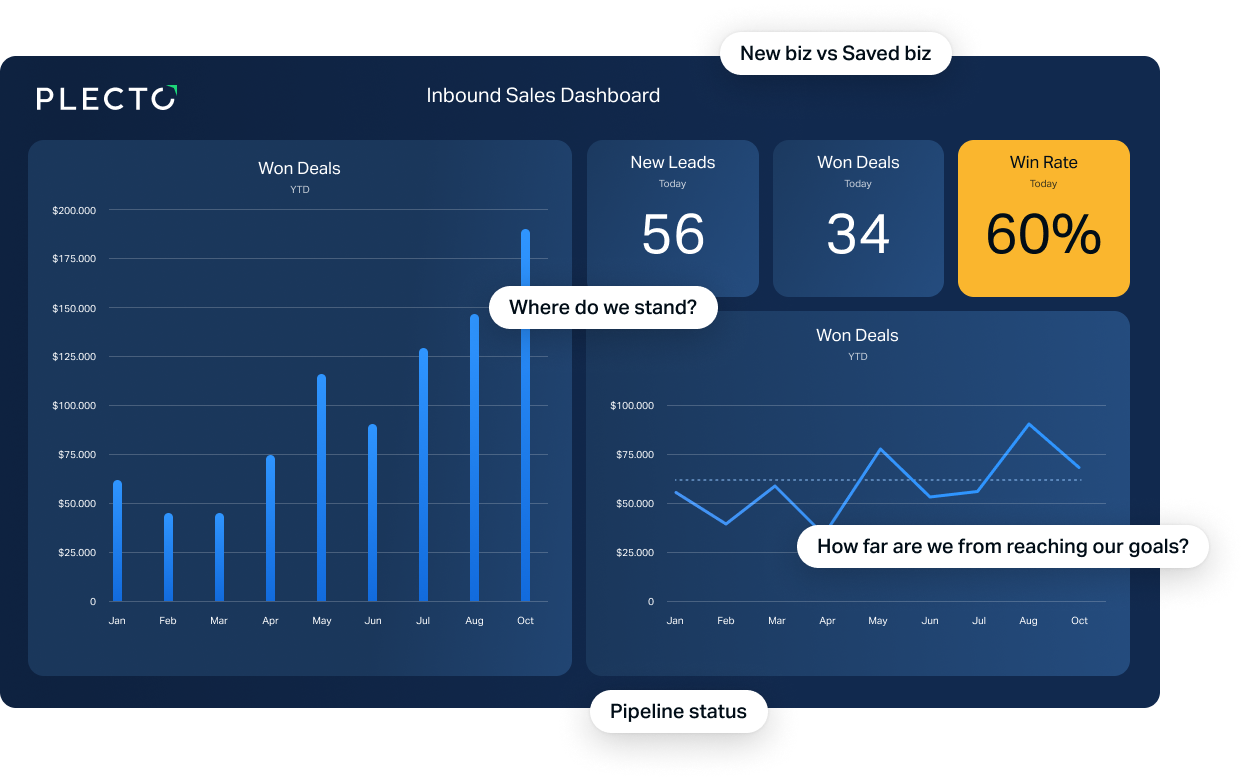
Step 2: Celebrate Success
Our brains are hardwired to crave the 'reward chemicals' that we release when we succeed. Mood-regulating chemicals such as serotonin are released when we feel proud or significant. A recent Gamification at Work survey reveals that gamification provides a sense of belonging and improves job satisfaction and employee performance by making people feel more productive at work.
Using instant notifications and gamification elements triggers the release of serotonin, which boosts your employees’ moods, motivation – and ultimately, their performance.
"Sales are usually considered serious business, but highly motivated sales teams with unbreakable team bonds also tend to have fun at work. Friendly competitions are a great way to drive sales teams to reach the next level."
Jens Oberbeck
VP of Sales at Pipedrive
How and why does celebrating success motivate sales teams?
Sales can be tedious with repetitive tasks, like cold-calling, following up, repeating the same pitch, and chasing leads that seem to have disappeared. The monotony can kill even the most eager sales rep’s motivation. Celebrating small wins every day with gamification elements, like leaderboards, instant notifications, and sales challenges make day-to-day tasks fun and rewarding. This can reignite waning enthusiasm and help your team stay motivated and engaged in their work.
The same survey into workplace gamification also shows that sales reps working in gamified environments finish their tasks more quickly than those who don’t and that gamification makes them feel happier at work. With an endorsement like that, the potential impact of adding instant notifications and gamification elements to your sales performance management toolbox is hard to ignore.
Pipedrive's VP of Sales, Jens Oberbeck, has seen the effects of gamification firsthand. He says, “At Pipedrive, we use SPIFFs gamification contests on a weekly basis. Our contest focuses on honoring effective activity-based behavior such as calls or demos.” Since introducing gamification, he’s noted that employee morale has improved and the whole company has gotten involved by celebrating the top three sales performers each week.
Oberbeck’s experience is hardly surprising. Gamification taps into some of our most primal instincts and desires – for example, community, status, competition, feedback, and rewards. By tapping into these basic needs, gamification keeps people engaged as they try to level up and achieve recognition for their achievements.
Curious to know more about the psychology behind gamification? Read why gamification works in this article – and try some of the provided examples for yourself!
3 Ways to Celebrate Success in Your Daily Operations
1. Leaderboards
Leaderboards are an excellent first step toward gamification because they’re easy to implement and people immediately understand them. Use leaderboards to boost enthusiasm around tiresome top-of-funnel activities, like the number of outbound calls made or emails sent. Make sure to display your leaderboards where everyone can see them – flat-screen TVs around the office are ideal.
See how Danish fashion giant, Trendday, increased transparency and improved employee motivation by displaying data dashboards on TVs around the office.
2. Instant Notifications
Give immediate kudos by displaying instant notifications whenever someone reaches a milestone or completes a high-yield sales activity. To keep your outbound reps engaged, choose gamification software, like Plecto, which allows you to send notifications to their smartphones. This is one of the best ways to create excitement throughout the workday!
3. Challenges
Less intense than sales contests, challenges are a fun way to drive immediate action. Keep it small and simple. Is energy lagging on a Thursday? Announce a flash challenge – for example, whoever makes the most outbound calls or sends the most emails by the end of the day gets Friday afternoon off. Are demos down? Announce a weekly challenge where any rep who books a certain amount of demos in a day wins a prize—allow multiple wins by the same rep, and watch their numbers skyrocket!
Step 3: Coach
Traditionally, performance reviews happen between one and four times per year, with managers and HR staff manually entering and tracking all performance information and agreements. It’s a lot of effort for, what’s often, very little direct return for most employees. This old-school way of tracking performance does little to nurture talent and is most effective with under-performing employees who face potential consequences for not improving their efforts.
A better option is regular one-on-one coaching sessions. Alen Mayer believes that coaching is often overlooked or generally not done well. He contends that the biggest problem in sales is that managers aren’t developing their employees’ skills. He says, "Maybe they’ve got some access to sales training, but there's no follow-up after the sales techniques." He believes that many managers patronize their sales reps rather than try to understand what motivates them and how to help them succeed from a sales management perspective.
"People are motivated when they feel empowered, heard, and cared for. You have to put people first. If they feel you’re genuinely interested in their growth and development, they’ll be extremely motivated to work hard."
Tommy Jester
Director of Sales (North America) at Aircall
How and why does coaching improve sales performance?
Whether you are managing a restaurant or an e-commerce store, coaching is a structured method of hospitality and sales performance management. It’s centered around setting appropriate sales KPIs with each employee. Instead of focusing on what isn’t working or what needs to change, effective coaching capitalizes on smaller wins – like the deal that’s just closed. One-on-one coaching motivates employees by celebrating what they’ve done well, reinforcing the positive behavior that led to their current win, and helping to develop their skills.
Preben Braagaard, Director & CEO at Danish sales coaching and consulting firm, Coachers, believes that the right motivation and support are paramount to accelerating sales results. He advises, “Focus more on the process rather than results. Training in negotiation skills, closing, relationship building, and so on is very important in sales.”
When you set sales KPIs in collaboration with each employee, they feel invested in the process. This gives them something to work toward in a supportive environment while driving the company toward achieving its overall vision.

4 Steps to Sales Performance Management Coaching
1. Create a performance agreement.
Individual performance agreements are an ideal starting point for one-on-one coaching sessions because they enable you to have data-driven conversations that can help you identify each employee’s development needs. Choose one or two sales KPIs that could use a little boost and then set short-term targets with a view to creating a 'quick win.'
2. Hold regular coaching sessions.
To be effective, sales performance management coaching must happen regularly. Agree on a recurring schedule during your initial coaching session with each employee – and stick to it. To make the most of your coaching time, send out a list of topics with each meeting invite. Start each coaching session by looking at real-time sales KPIs data in a supportive way that makes each employee feel safe to confide in you. Don’t forget to share your notes after the meeting.
3. Ask the right questions.
Celebrate success as a team – and recognize success one on one. Recognizing success is crucial to effective coaching because it encourages employees to identify and reflect on what led to their recent success. This helps them internalize those behaviors until they become second nature.
Here are some questions you might ask during a coaching session:
- What’s going really well for you right now?
- What’s been your proudest achievement this week/month?
- What’s one win you’ve observed within your team since our last session?
4. Listen.
Remember that every coaching session is an opportunity to build your employees’ trust and confidence – or damage it. These sessions are meant to leave your employees feeling empowered and ready to excel. Take this opportunity to understand what each employee would like to learn more about, what could help them be more effective in their job, and what could make your workplace even better. Suggest new methods and tools to help support their wishes – the sky’s the limit in terms of potential when employees feel they have the support and tools they need to grow and learn new things.
Get the complete guide and give the VCC Model a try!
Now that you’ve read the summary version of the VCC Model, why not download the complete guide?
VCC: The News Sales Performance Formula contains our complete 3-step model for building a performance-driven culture in your sales organization. With contributions from 13 sales experts, it’s chock-full of inspiring insights and real-world examples from industry-leading organizations.
Download the full guide here!
Knowing how to motivate sales reps to outperform their targets is your first step to building a high-performance sales team – and Plecto can support you all the way! Plecto integrates with most major sales-tracking software and offers almost unlimited options for customizing your data visualization. Plecto also includes built-in performance-driving features like leaderboards, gamification, and instant notifications to spark friendly competition and keep your employees motivated. Sign up for a 14-day Plecto free trial and watch your team outperform today!
